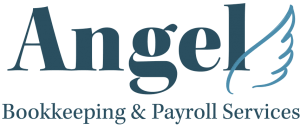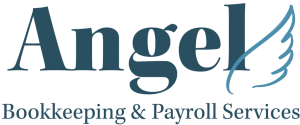April 2026 marks the first shift towards Making Tax Digital (MTD) for Income Tax (IT). For many self-employed individuals and landlords, this means an overhaul of your tax recording and reporting system as we move into the new year. Our advice? Act early to stop last-minute stress before the changes come into effect.
To ensure you’re prepped to go digital, we’ve put together a comprehensive MTD checklist. Step into 2026 with confidence, knowing that your finances are ready for the new tax year.
1. Check if You’re Eligible
The first task on your MTD to-do list is to check if you’re actually reaching the threshold.
From April 2026, only sole traders and landlords with a turnover of over £50,000 need to follow the new rules. This includes potential combined earnings if you’re both a landlord and self-employed. So, for instance, if you turnover £40,000 as a landlord and £30,000 from self-employment, you’ll be required to follow MTD for the upcoming tax year.
In April 2027, the thresholds will change to include sole traders and landlords with a turnover of over £30,000. In April 2028, the threshold will drop to £20,000.
Learn more about what’s happening in our guide What is MTD for ITSA?
2. Know the Changes
Once you’ve checked your eligibility, it’s good to get to grips with what’s changing under MTD. From April 2026 onwards, all eligible landlords and self-employed individuals will need to:
- Use MTD compatible software to record your income and expenses
- Submit quarterly reports of your earnings to HMRC
- Submit an annual tax return (equivalent to the current Self-Assessment Tax Return)
Feeling overwhelmed? That’s why we’re here to help. We can set your MTD record-keeping system up for you, automating your finances so that you’re ready for April 2026. Get in touch with our team today to learn more.
3. Choose Your Software
Before getting started with MTD, you’ll need to sign up for compatible software. You can choose between two different types of software:
- Record-keeping software that connects to your bank accounts and fully digitises your receipts and invoices, creating a full digital record of your transactions.
- Software that connects with your existing spreadsheets and record-keeping system, allowing you to send the data directly to HMRC.
At Angel Bookkeeping and Payroll Services, we use Sage and QuickBooks to digitise client cash flow, both of which are MTD compatible.
When working with us, we’ll use this cloud-based software to automate and maintain your finances. It’s a simpler, more streamlined approach that reduces the need for back-and-forth communication between our team and yours, and is fully compatible with MTD.
4. Sign Up for MTD
If you’re eligible for MTD, you’ll need to sign up through HMRC’s website. It’s vital you enter the correct information and follow guidelines to ensure full compliance.
We’re happy to sign up for MTD on your behalf, reducing the number of tasks on your checklist and taking the stress off your shoulders.
It’s also good to note that you can voluntarily sign up for MTD, even if you’re not meeting the thresholds. This is a smart move if you want to get to grips with the new system ahead of April 2027, reducing last-minute tasks and giving you the peace of mind that you’re ready for the changes.
5. Record Your Cash Flow
Once you’ve signed up and chosen your software, it’s time to start recording your cash flow. Under MTD, you’ll need to keep accurate, up-to-date records of all income and expenses. This means:
- Logging every sale, invoice, and rental payment.
- Keeping digital copies of receipts and supplier invoices.
- Ensuring business and personal finances are clearly separated.
- Reconciling your bank feed regularly to avoid messy inaccuracies
Getting into the habit early will make the transition seamless and prevent stressful reconciliations later. With digital records in place, quarterly updates become quick and simple, too, so that you spend less time worrying about your financial reporting.
Our bookkeeping services cover all of these essential tasks so that you don’t have to. It’s our job to track your cash flow, ensuring that your books balance when it’s time to submit your reports for accurate and compliant taxes.
6. Remember Key Deadlines
Quarterly reporting is one of the biggest changes arriving with MTD for Income Tax. Instead of one annual tax return, you’ll be submitting updates every three months alongside a final declaration.
If you don’t submit your reports and tax returns on time, you’ll be liable for penalties, fees, and interest, none of which are ideal when running a business.
Stay ahead by adding these key dates to your financial calendar:
| Date | Task |
| 6th April | The new tax year begins |
| 7th August | Deadline for your first quarterly report |
| 7th November | Deadline for your second quarterly report |
| 31st January | Deadline to submit your tax return for the previous year |
| 7th February | Deadline for your third quarterly report |
| 7th May | Deadline for your fourth quarterly report |
7. Work With Tax Professionals
MTD is the biggest change to tax for landlords and sole traders since self-assessments were introduced. It’s not a simple switch, either, and if using new software and submitting quarterly reports is leaving you a little stressed, you’re not alone.
The good news? You don’t have to deal with the MTD changes by yourself.
Our team of tax professionals and bookkeepers can take care of each of these tasks for you, from setting up software to filing quarterly reports. We stay up-to-date with HMRC news, too, and will know about any potential changes to the system before they happen, ensuring your tax system is always compliant.
Contact Our Bookkeepers
Ready to make MTD simple? Step into 2026 feeling financially confident with our help. Reach out today to chat more about what you need and our bookkeeping services, and receive a no-obligation quote from our friendly team.

